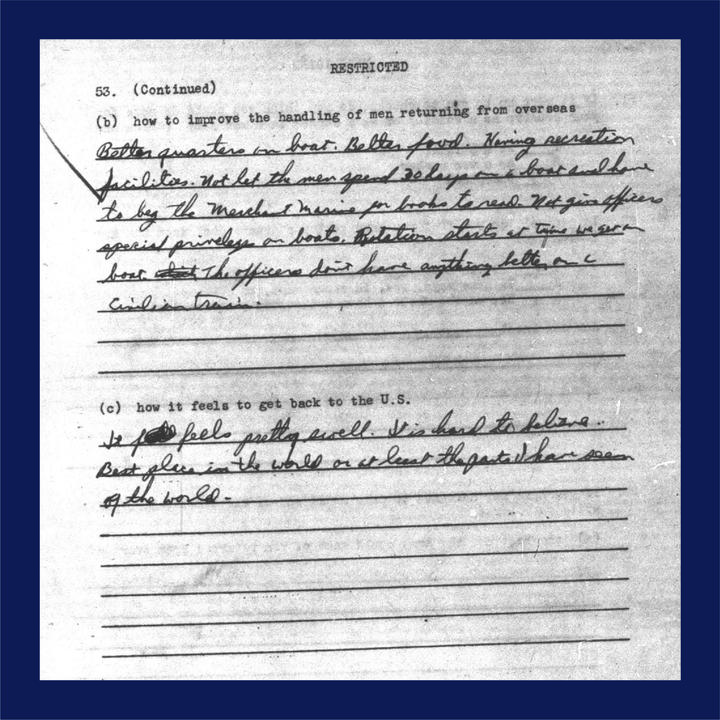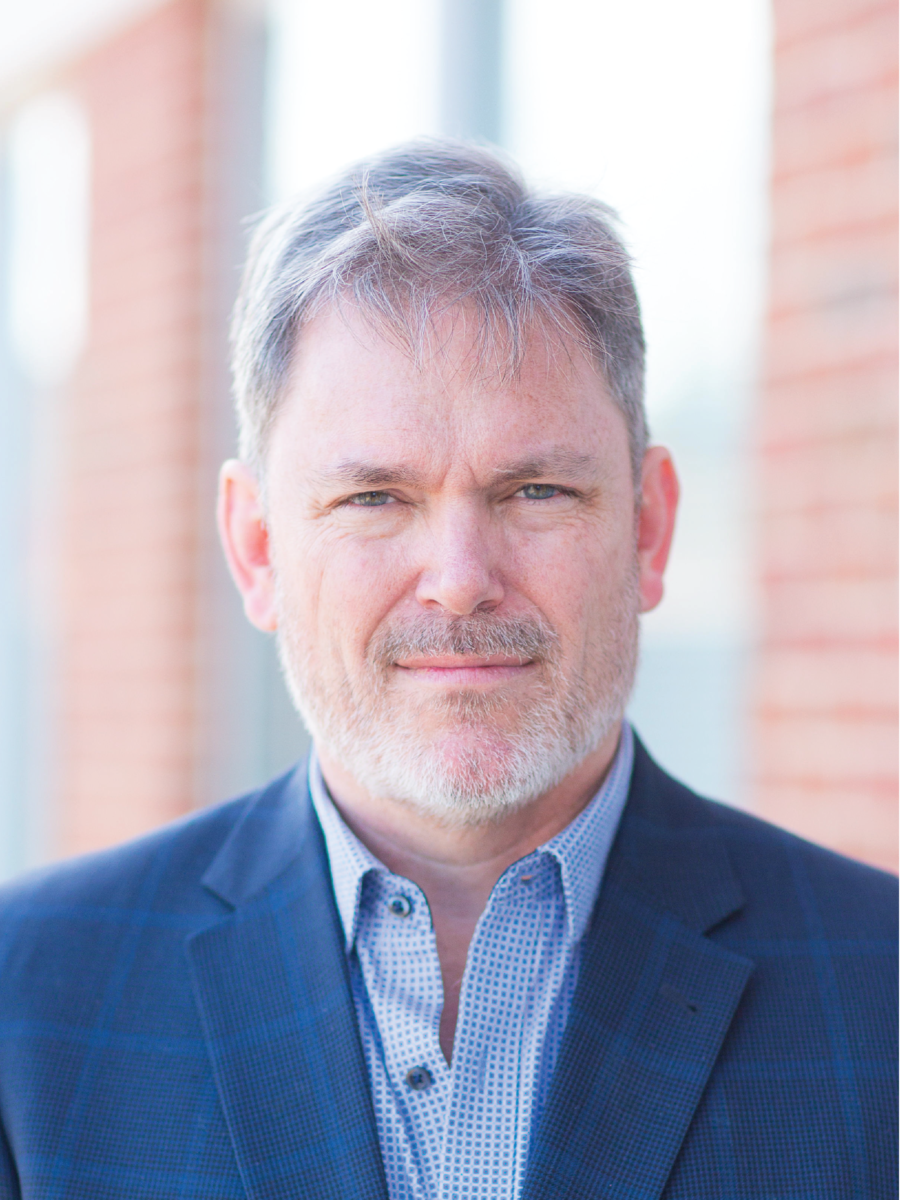To analyze U.S. Soldier attitudes, we employed various strategies from computational text analysis and social network analysis to examine what is called “Survey 32.” This was a brief survey conducted during World War II to understand whether or not Soldiers preferred separated or integrated units and the ability for soldiers to provide a written explanation elaborating on their responses to the survey as well as their views on the survey as a whole.
After an initial phase of data wrangling, parsing and cleaning, we conducted exploratory data analysis to find out more about the backgrounds of the Soldiers who completed the survey. Our team also did a sentiment analysis to gain a better understanding of what emotionally-charged words Soldiers used to weigh-in on racial and gender relations.
To further round out our understanding, topic modeling captured prominent themes that emerged from survey responses.
Figures
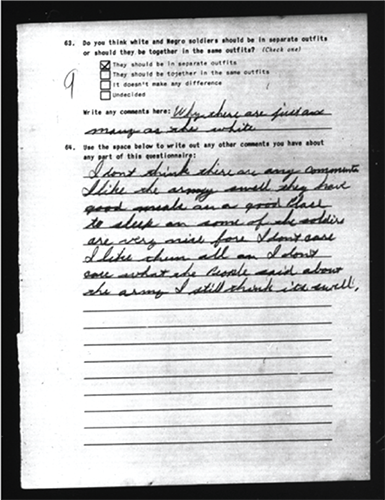
Conclusions
Using a novel dataset from a unique, historic collection gathered by the U.S. Army during WWII we analyzed Soldiers' handwritten responses by using natural language processing methods and social network analysis to dig deeper into Soldiers' attitudes:
- Race relations attitudes showed that Black Soldiers discussed their position within the military and society in the context of their race more frequently than White soldiers. White soldiers more frequently discussed the war or their career plans.
- Gender relations attitudes showed that the majority of male Soldiers did not think that women belonged or could contribute to the military; and tensions existed due to interracial relationships.
- Race and spatial arrangements showed that some White soldiers wanted to desegregate the military outfits; did not view their Black counterparts as equals; and did not want to live, eat or sleep alongside fellow Black Soldiers.
Soldier Characteristics
Overall, the characteristics of soldiers who took Survey 32 were on the younger side (Figure 2), Black soldiers surveyed were not as educated compared to the white soldiers, of which most had at least some high school education (Figure 3). Overall, White soldiers were predominately against integrating outfits while Black soldiers were mostly split or didn't care (Figure 3).
General Themes and Sentiments Among Survey 32 Respondents
Understanding general themes of attitudes from both Black and White Soldiers in longer responses were revealed by topic modeling to identify groups of related words. The size of the nodes in Figure 7 correspond to the degree that words are connected and illustrate what was on the minds of each group.
Gender Roles
While women were unable to serve in the military in the same capacity as men during WWII, they did contribute to the war effort through the Women's Army Corps (WAC). Both Black and White Soldiers surveyed did not have a positive view of women in the U.S. Army.
Figures

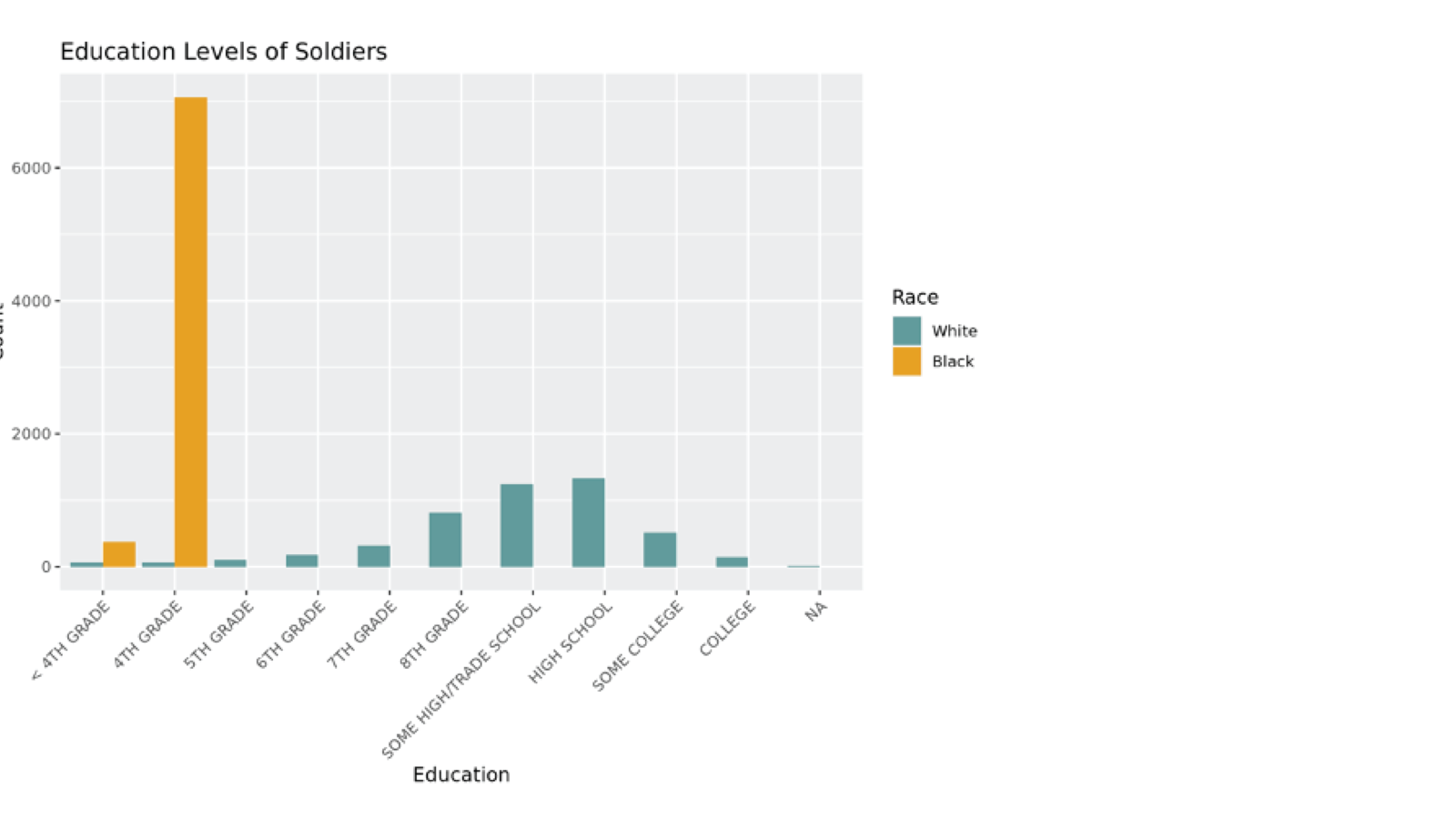

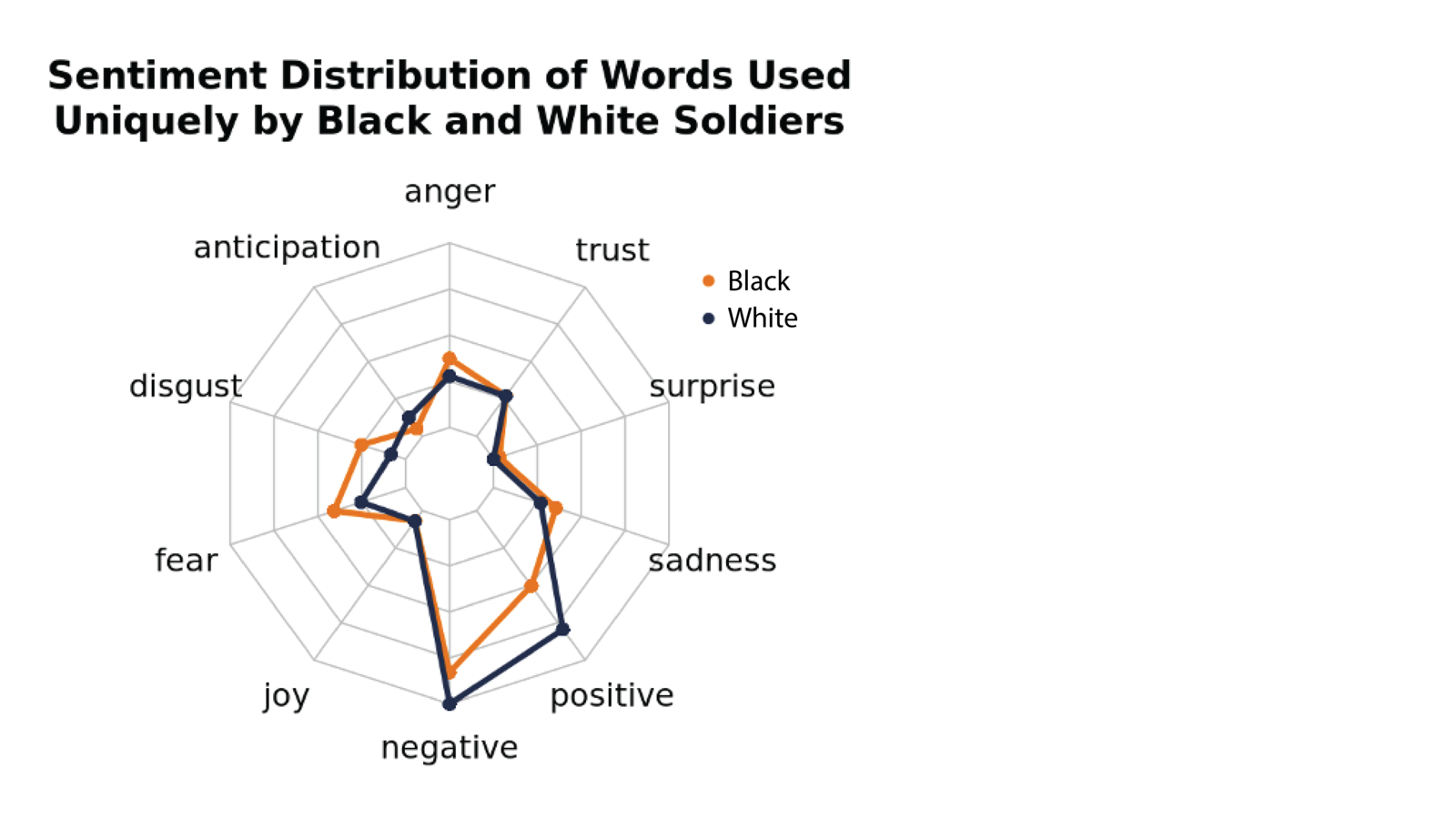
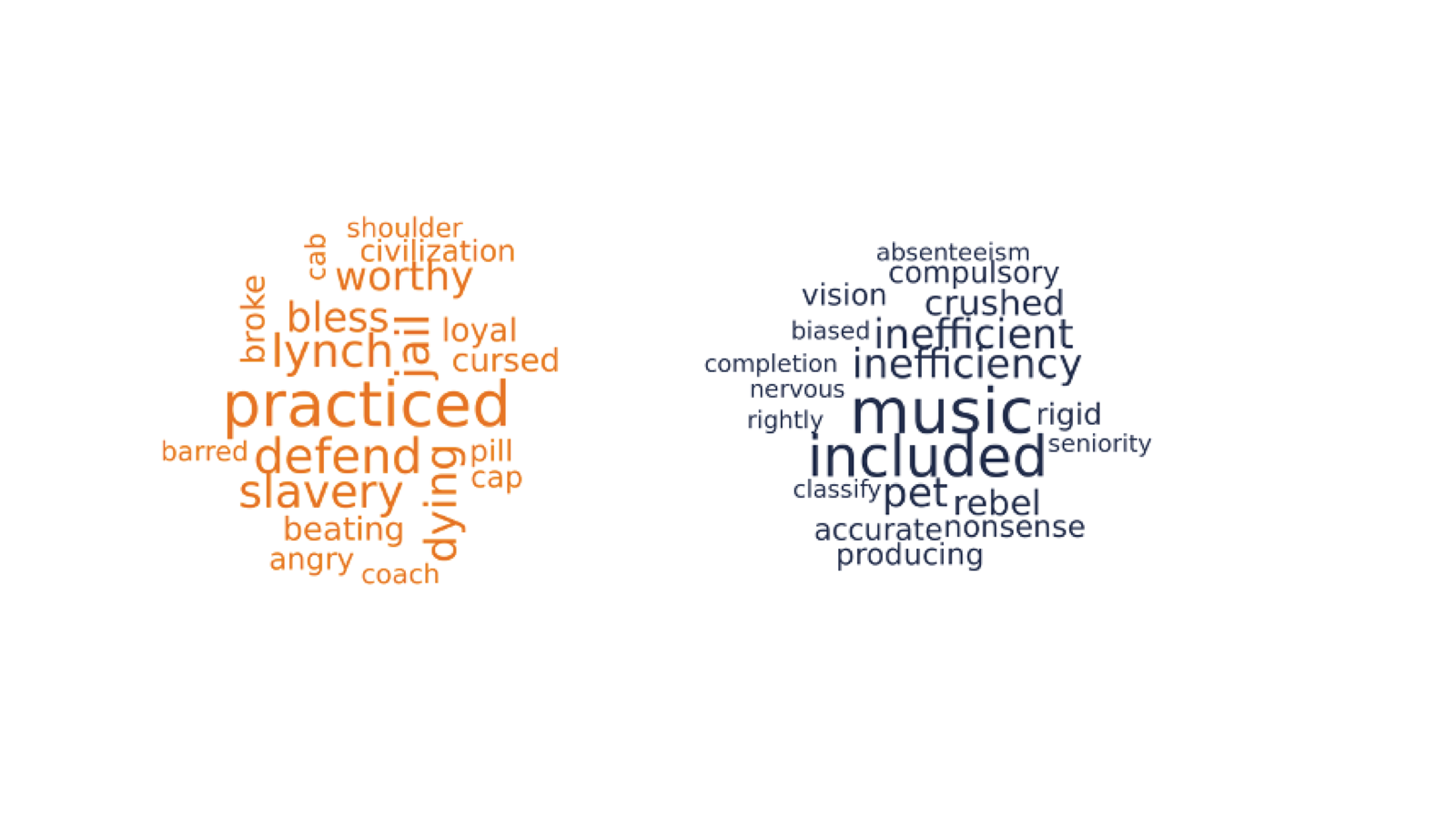
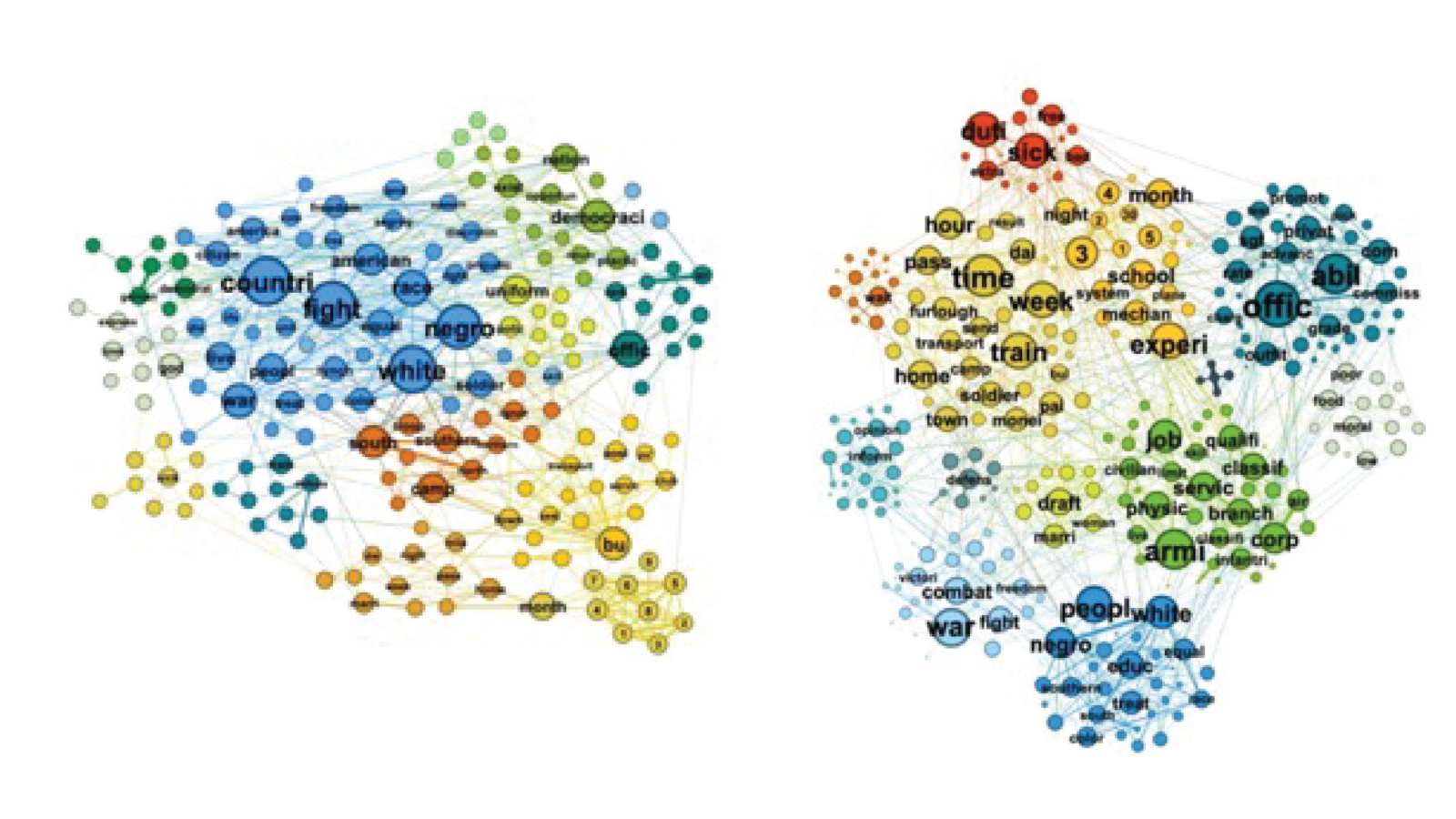
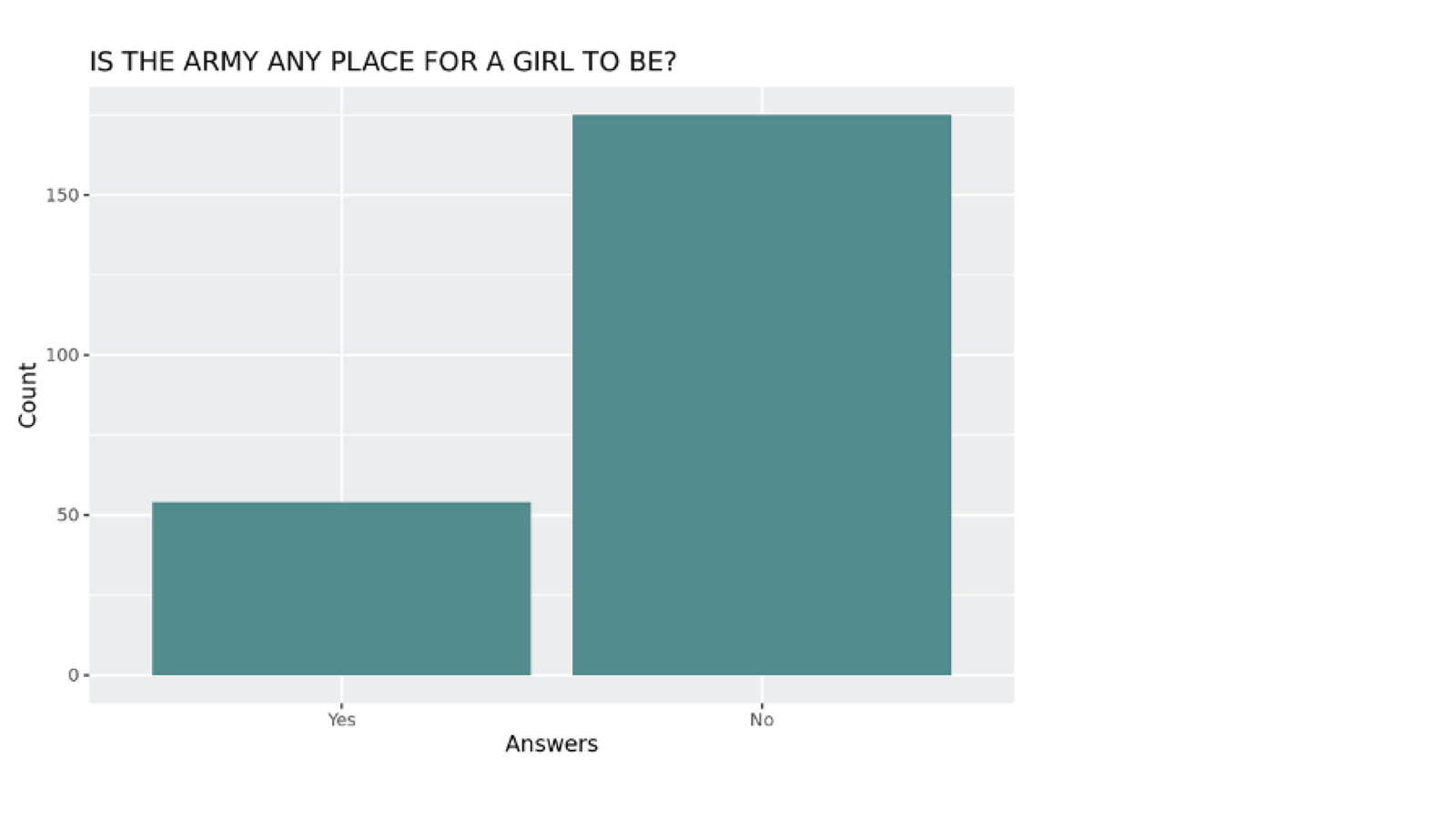
Figure 2. Survey 32 participants.
Figure 3. Black soldiers surveyed were not as educated compared to White Soldiers. Most White Soldiers had at least some high school education.
Figure 4. White soldiers were predominately against integrating military outfits while Black soldiers were mostly split or didn't care.
Figure 5. Words used uniquely by each group supported the creation of this sentiment plot illustrating that the unique words of Black Soldiers corresponded more with more fear, disgust, anger, and sadness than those of White soldiers. The words used to evaluate these sentiments were unique to each surveyed group, and the words used by Black Soldiers were never used by White Soldiers and vice versa.
Figure 6. Word clouds visualize the top 20 frequently used unique words of Black and White Soldiers, on the left and right respectively. The size of the word is proportional to the number of times it appears in the text. Perhaps, the most important takeaway from this analysis is that the words slavery, lynch, or jail never appeared in the response of a White Soldier. White Soldiers’ unique words were significantly more lighthearted as they discussed things such as music and pets.
Figure 7. Black Soldiers' long comments show a fairly centralized focus on race relations and fighting for one’s country. White Soldiers' long comments show race relations as one of three or four distinct categories of concern to the White Soldier, along with concerns about job advancement, job ability, and time management.
Figure 8. Black and White Soldiers surveyed did not have a positive view of women in the U.S. Army.
The American Soldier in World War II project receives National Endowment for Humanities grant, Virginia Tech Daily, September 23, 2019.
Young Scholar + Innovative Internship = Public Good, UVA School of Engineering, October 1, 2020.
